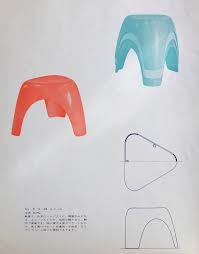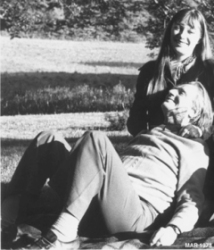
Sori Yanagi (1915-2011) was the most well-known, admired,and influential Japanese designer of the post-war period. A consummate modernist with a deep reverence for tradition, Yanagi's 50-year teaching and design career produced a myriad of forms linked by simplicity, economy of materials and means, and unassuming practicality. Buildings, bridges, teapots and torches all received the same thoughtful consideration, multiple hand-made models, and eventual production in the simplest, purest form. "I try to create things that are useful in our daily lives, and during the process, beauty is born naturally." Born in Japan in 1915, the designer's father was Soetsu Yanagi, founder of the "mingei" movemnt which celebrated Japanese folk crafts, eventually establishing the Nihon Mingeikan (Folk Crafts Museum of Japan) which his son Sori directed in the 1970s. Soetsu's reverence and support of tradional crafts was an enormous influence on the design philosophy and practices of Sori, as were the works of Le Corbusier and Charlotte Perriand, who worked in Japan in the early 1940s. By the 1950s Yanagi had opened his own studio where his basic principle of "design by hand" accompanied his admiration for what he called "anonymous design" such as the Jeep, or a baseball glove. This idea found natural expression in his life-long interest in designing household objects such as kitchen implements. It is estimated that each year over 500,000 of Yanagi's famed Teapot are sold in Japan alone. For Yanagi, the intrinsic beauty of an object expressed itself through the successful utility of the design, and the design expressed its' own success by ease of use and simplicity of production. Most notably, his Butterfly Stool of 1954 exhibits all of these characteristics, and is widely considered one of the greatest designs of the century.. Made of 2 identical curved-L pieces, it is fastened together by a single brass rod to form a shape recalling the open wings of a butterfly, or the gates of a Shinto shrine, or a samurai helmet. Engineered according to strict tectonic principles of tension and compression, these visual references imbue the piece with the subconscious strength of traditional associations, while it's elegant organic form exhibits the modernist principles of simplicity and practicality shared by his contemparies such as the Eames, Alvar AAlto, and Corbusier. Yanagi's influence as both a designer and teacher grew throughout his lifetime, and continues to be seen among current designers both in Japan and around the world. "Over time, he has become timeless."




.png)